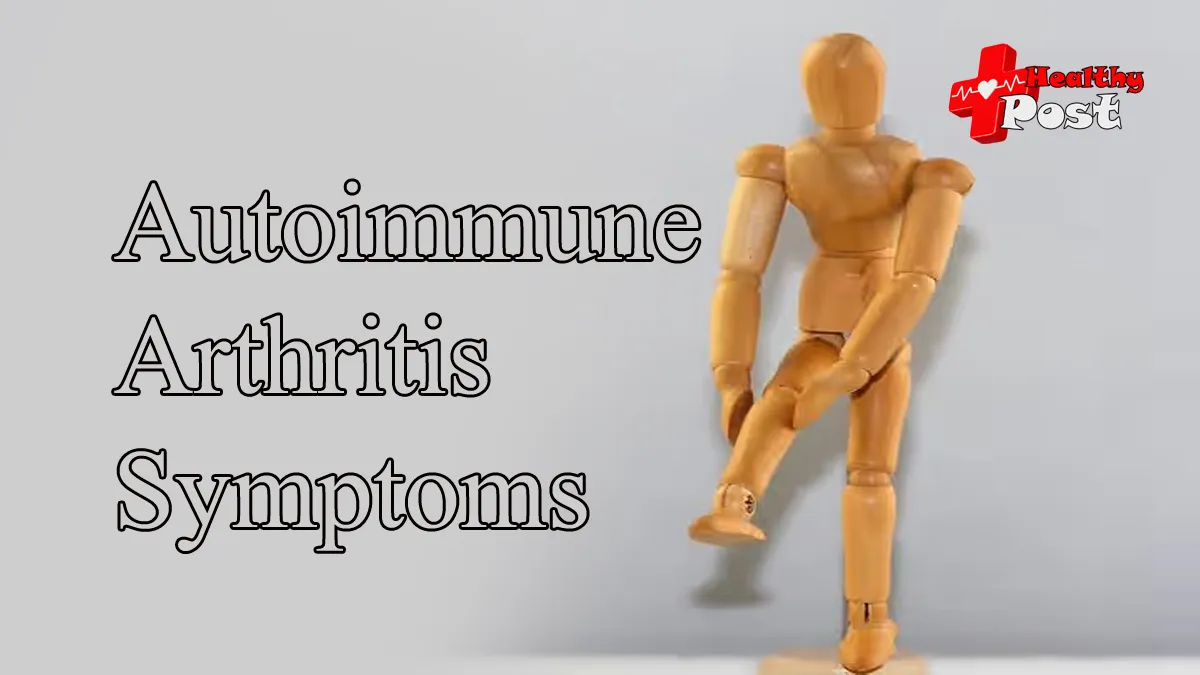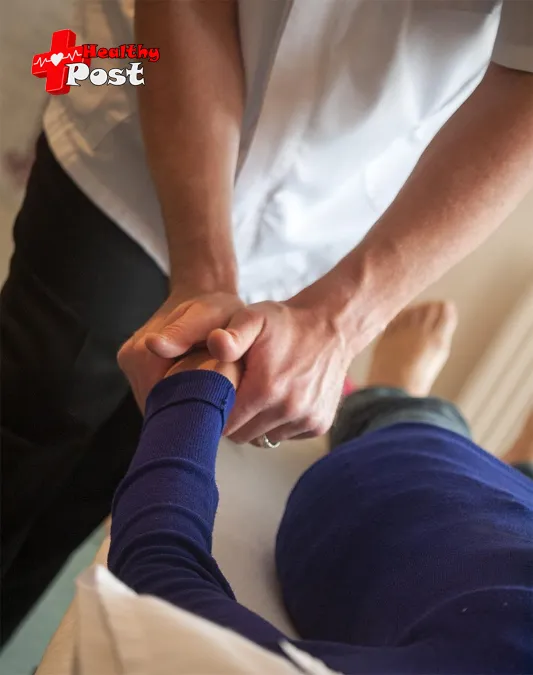
18 Autoimmune Arthritis Symptoms Most People Ignore
Maybe you’ve heard someone mention autoimmune arthritis—like rheumatoid or psoriatic arthritis . But do you know how to recognize the debilitating symptoms?
Normally, your immune system produces antibodies to protect your body from bacteria and viruses. But sometimes, your immune system produces antibodies that go after your body’s healthy tissues and cells. This can lead to autoimmune diseases, in which these super antibodies go on to attack your body’s healthy cells. The only treatment is to suppress your immune system to curb its inaccurate immune response .
The most common autoimmune diseases today are as follows:

- Rheumatoid arthritis (RA)
- lupus
- ulcerative colitis
This article specifically discusses autoimmune arthritis, but these common conditions deserve attention.
Who do autoimmune diseases affect?
Anyone can develop an autoimmune disease, but certain groups are at greater risk.
- Individuals with a family history: Autoimmune diseases run in families. Different autoimmune diseases can affect different members of a family. If you inherit certain genes, they can make you more likely to develop an autoimmune disease.
- Women of childbearing age: Women are more susceptible to autoimmune diseases, which often develop during their childbearing years.
- Individuals in specific environments: Exposure to certain things can cause autoimmune diseases, such as bacterial or viral infections, chemicals, and sunlight.
- Specific ethnic backgrounds: Autoimmune diseases are more common in certain populations.
What is arthritis?
Many types of autoimmune diseases can attack your joints. Some of the most common autoimmune arthritis include:
- Palindromic rheumatism: This is a rare type of arthritis. It affects the joints in the wrists, knees, and fingers. It causes pain, swelling, fever, and stiffness.
- Spondyloarthritis: This arthritis disease attacks your spine and joints.
- Rheumatoid arthritis (RA): RA is the most common type of autoimmune arthritis. It causes pain and swelling in the small joints of your hands and feet. It can also attack your knees and shoulders.
- Psoriatic arthritis: This affects people between the ages of 30 and 50. The autoimmune part of the arthritis in this condition begins about 10 years after they develop psoriasis.
What is rheumatism ?
If your grandmother talked about her rheumatism, she might be talking about her joint pain. People often use the terms rheumatism and rheumatoid arthritis interchangeably. Rheumatism is a disease characterized by pain, swelling, and inflammation in the joints, connective tissue , and muscles. Rheumatism comes from the Ancient Greek word for flow. The idea is that there’s a flow in your body that causes pain and stiffness. So in ancient times, if someone “had a flow,” they likely had rheumatism.
18 Autoimmune Arthritis Symptoms Most People Ignore
Here are 18 common symptoms of this autoimmune disease.
1. Pain or aches in multiple joints may indicate autoimmune arthritis
It’s normal to feel stiff occasionally, especially if you’ve been doing a lot of physical activity. However, if you experience constant pain in all your joints, it could be a symptom of rheumatoid arthritis.
2. Stiffness in multiple joints may indicate rheumatoid arthritis
We often attribute stiffness to aging and constant use. If you played sports in school, you might feel its effects later in life. However, if you experience noticeable stiffness in every joint, don’t ignore it. These symptoms may be caused by past exercise, but they could also be an autoimmune condition like rheumatoid arthritis (RA) or another arthritic condition.
3. Tenderness and swelling
Some obvious signs of rheumatoid arthritis are swollen and tender joints. They are painful to the touch. They may become red and feel inflamed. Swelling occurs because fluid accumulates around and in the joints. Swelling can also lead to long-term joint damage.
4. Unexpected weight loss
If you haven’t changed your diet or started exercising but notice your weight is dropping, you should monitor your health. Unexplained weight loss may seem like a blessing, but it can be a red flag for several health conditions, including autoimmune arthritis. Weight loss is an easy symptom to ignore. It’s often accompanied by joint pain and fatigue. Furthermore, autoimmune diseases can affect your digestive tract and cause a loss of appetite, which can lead to weight loss. These symptoms should alert your doctor to test you for an autoimmune disease.
5. Fever without other causes
Random fevers without other symptoms or causes are the hallmark signs of autoimmune diseases. Fever is a key characteristic of these diseases. These fevers may come and go, lasting a day and then disappearing for weeks. These fevers are common in juvenile arthritis, an autoimmune disease that affects children between six months and sixteen years old.
6. Fatigue or tiredness could mean autoimmune arthritis
Your life is busy with school, work, kids, and family. Feeling tired at the end of the day is normal. However, if you’re constantly tired, it might be more than just run-of-the-mill fatigue. Tiredness and fatigue are common symptoms of this condition. Autoimmune diseases stress your body, releasing inflammatory proteins into your bloodstream. These proteins make you feel tired and exhausted. Don’t ignore fatigue, especially if you have other symptoms of an autoimmune disease.
7. Connective tissue swelling
Painful swelling of connective tissue is a common sign of autoimmune diseases. It’s easy to dismiss these symptoms at first, as everyone experiences pain. However, persistent swelling takes it to the next level and often prompts a visit to a rheumatologist for a diagnosis.
8. Swelling of fingers and toes
Some people with rheumatoid arthritis deal with swollen hands, fingers, and toes. Some people report that their fingers swell up until they look like sausages. These symptoms can make it difficult to carry out normal activities. However, there are natural remedies that can help relieve swelling and pain.
- Exercise: It may seem counterintuitive, but exercise can help reduce pain and swelling caused by RA.
- Acupuncture: Acupuncture is one of the oldest forms of pain relief in traditional Chinese medicine.
- Heat and cold: Cold can reduce swelling, while heat warms the joint.
- Massage: Another natural pain reliever is massage. There are different types of massage, so you may want to talk to a massage therapist about which type is best for relieving pain and swelling.
9. Reduced range of motion is common in autoimmune arthritis
Rheumatoid arthritis causes inflammation, which can damage your joints and make it difficult for you to move freely. This limited range of motion develops slowly. As a result, people with RA often experience deformities in their hands and feet.
10. Morning
Morning stiffness is due to inflammation caused by rheumatoid arthritis. Your immune system goes on high alert and attacks your tissues. It mistakes it for bacteria or a virus, causing the painful inflammation and stiffness you experience. To help relieve stiffness and pain, practice these techniques.
- Start your day slowly. Do gentle stretches and exercises to warm up your joints.
- Heating blankets can help relieve morning stiffness
- Take the medicine in bed and give it time to start working.
- Use a natural joint cream.
- Eat a healthy breakfast for strength and gut health.
11. Nail changes may reveal autoimmune arthritis
Not everyone with rheumatoid arthritis experiences changes in their fingernails or toenails. Those who do complain:
- ridges on the nails
- Yellow nails
- The nail is lifted from the nail bed
- Red streaks under the nails
- stick form, so the nail grows downward
12. Red and painful eyes
People with RA may experience dry eyes, irritation, redness, or pain. Not everyone with this autoimmune disease experiences these eye problems, but they could be the beginning symptoms of something that could be misdiagnosed as another condition.
13. Lung and heart problems
Rheumatoid arthritis causes chronic inflammation, which leads to scarring. Scar tissue stiffens your lung tissue, making it difficult to breathe. This autoimmune disease also increases your risk of hardening and blockage of arteries , as well as inflammation in the area around your heart.
14. Joints may feel hot to the touch
Rheumatoid arthritis can make your joints feel like they’re on fire. Inflammation is the culprit behind this warm feeling in your joints. Some people also develop nodules or lumps in their joints.
15. Muscle weakness may reveal a little-known autoimmune arthritis
A rare autoimmune disease called myositis causes chronic inflammation and muscle weakness, particularly in the shoulders, neck, back, and hips. Like most autoimmune diseases, it’s unclear what causes this rare condition.
16. Light pink or red rash
A red, butterfly-shaped rash on the cheeks and nose is a common sign of lupus . This red rash often appears after you’ve been out in the sun. Some autoimmune arthritis conditions can cause a rash on the legs or arms.
17. Growth Problems
One form of juvenile arthritis can interfere with a child’s bone and growth development. Typically, juvenile arthritis causes your joints to grow too quickly or unevenly.
18. Feeling unwell overall
When life is running at full speed, it can be challenging if you don’t feel well. If you have an overall feeling of discomfort along with some of the symptoms listed, it might be worth getting checked out to see if you have autoimmune arthritis.
Autoimmune arthritis can be difficult to diagnose because many of its symptoms resemble those of other health problems. Because it’s easy to overlook common RA symptoms, you might put off finding out why you’re feeling sick. Don’t hesitate. Take the first step and get yourself checked out.

